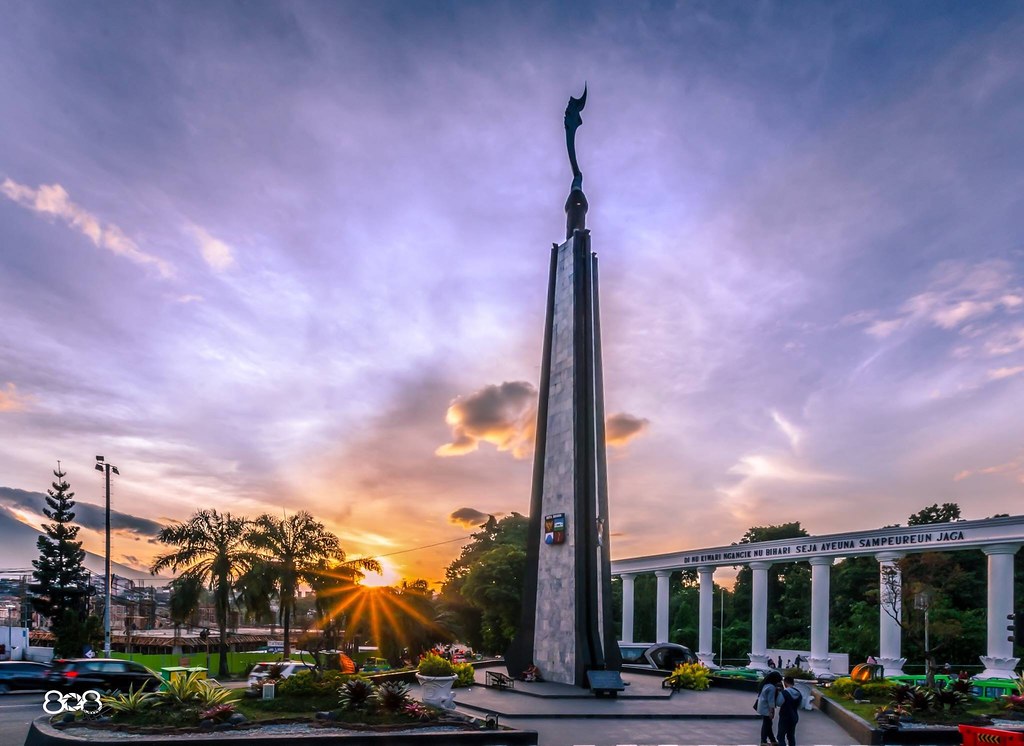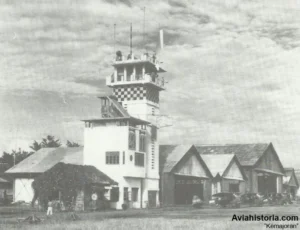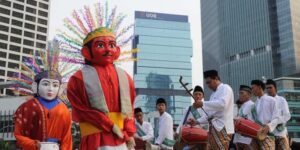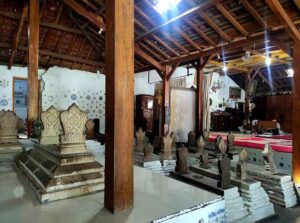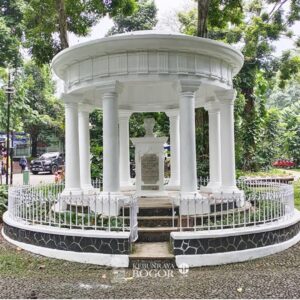One of the traditional weapons from West Java that has become an icon of Bogor City since 1982. The Kujang Monument is located right next to the Bogor Botanical Gardens.
The approximately 25-meter-high Kujang Monument was built on May 4, 1982, on a 26-meter-wide x 23-meter-long plot of land and is estimated to cost Rp 80 million. The Kujang Monument was erected at the intersection of Jalan Raya Pajajaran, Otista, and Baranangsiang. The land area of the Kujang Monument is 26 x 23 meters and has a height of 17 meters, plus the Kujang section which reaches a height of 6 meters. Under the Kujang Monument there is a plaza containing inscriptions from the Lingga and Batutulis inscriptions of the Pajajaran Kingdom led by Sri Baduga Maharaja Ratu Adil. The contents of the Plaza are “Dinu kiwari ngancik nu bihari seuja ayeuna sampeureun juga” which means “What is done today and tomorrow must be better than the day before”
The kujang symbolizes courage, strength, and the ability to defend oneself. For the Sundanese people, the kujang is not just a weapon, but also an heirloom with supernatural powers.
It is considered to possess magical powers and is often kept as an heirloom to protect the home from danger.
Each part and shape of the kujang has deep symbolic meaning, related to aspects of life, nature, and spirituality. Initially, the kujang was a farming tool used to cut grass growing in fields before planting rice. Over time, the kujang evolved into a weapon of war, a symbol of authority, and an heirloom that serves as a mystical medium.
The word “kujang” comes from the words “kudi” and “hyang.” In ancient Sundanese, “kudi” means a weapon or talisman possessing supernatural powers, while “hyang” means a god or something considered divine. So, literally, the kujang can be interpreted as a sacred weapon,
aka one possessing divine powers.
The Kujang is believed to have existed since the 8th or 9th century AD. The Kujang’s value as a talisman first emerged in the history of the Sundanese kingdoms of Pajajaran and Panjalu, specifically during the reign of King Kuda Lalean.
Since then, the Kujang has gradually been used by kings and nobles in the Sundanese kingdoms as a symbol of authority and supernatural powers. Once, King Kuda Lalean was performing penance (tapa brata) in a certain place. Suddenly, the king was inspired to redesign the shape of the Kujang, which had been used as a farming tool.
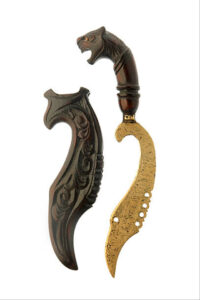
Strangely, the latest design that the King had in mind, its shape was similar to the island of “Djava Dwipa”, which is known as Java Island today. Well, after getting that inspiration, immediately Prabu Kuda Lalean commissioned Mpu Windu Supa, a blacksmith from the royal family, to make a blade like the one in the King’s mind. Mpu Windu Supa began his work with magical touches enriched with spiritual philosophical values, so it became a weapon that had high power. This is a Kujang with a unique shape, and became an object of supernatural power. This weapon has two striking characteristics. Its shape resembles the island of Java and there are three holes somewhere on the blade. The shape of Java Island itself is a philosophy of the King’s ideals, to unite the small kingdoms of Java into one kingdom headed by King Pajajaran. Meanwhile, the three holes on the blade symbolize Trimurti, or the three aspects of God from the Hindu religion, which is also adhered to by Kuda Lalea. The three aspects of God refer to Brahma, Vishnu, and Shiva. The Hindu Trinity (Trimurti) is also represented by three major kingdoms at that time. These kingdoms were Pengging Wiraradya, located in eastern Java; the Kambang Putih Kingdom, located in northern Java; and the Sundanese Kingdom of Pajajaran, located in the west.
Over time, the shape of the kujang evolved. As Islamic influence grew on the island of Java, the kujang was redesigned to resemble the Arabic letter ‘Syin’. According to a journal from Krisnadwipayana University, ‘Syin’ in the kujang represents the first letter in the shahada (statement of faith).
The three holes symbolizing the ‘Trimurti’ were also later replaced by five holes symbolizing the five pillars of Islam. This was an effort from the Pasundan region, namely Prabu Kian Santang who wanted to convert the Pasundan people to Islam. Finally, the Kujang philosophy, which has Hindu and religious nuances from past cultures, was reinvented according to the philosophy of Islamic teachings. At this time, Kujang depicts a combination of two models designed by Prabu Kudo Lalean and Prabu Kian Santang.

